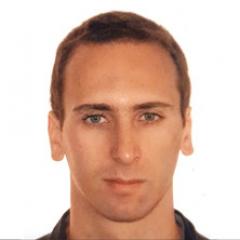Solvable supersymmetric field theories, string theory and AdS/CFT
Project Level: PhD, Masters, Honours
During the last four decades, supersymmetry has been at the forefront of theoretical and mathematical physics of fundamental interactions. It played a crucial role in constructing models aimed at the unification of all forces including quantum gravity, namely string theory. Supersymmetry has also led to several new developments in mathematical physics such as, for example, the study of conformal field theories (that play a fundamental role in string theory and in the description of phase transitions in statistical mechanics) and integrable systems.
Supersymmetric quantum field theories in different space-time dimensions have been a fruitful ground of research to construct solvable models that shed new light on the dynamics of strongly coupled systems (such as the confinement of gauge theories), and our mathematical understanding of the physics of fundamental interactions. Some of the most impressive examples appeared in the last two decades in the context of the holographic AdS/CFT correspondences where integrability techniques, originally developed in statistical mechanics, started to play a crucial role in solving string theory models of quantum gravity. Holographic correspondences are theoretical tools connecting (D+1)-dimensional theories of (quantum) gravity to D-dimensional Quantum Field Theories (QFTs). The term holography is used in analogy to 2D holograms that can encode information about 3D objects. The best established holographic conjectures involve supersymmetric theories.
This project aims at expanding our knowledge of solvable/integrable quantum field and string theories by exploiting the technical advantages existing in supersymmetric theories and their deformations.
We will investigate deformations of integrable QFTs as a means of constructing new solvable models. Part of the project will look at a particular class of deformations, the so-called TTbar deformations, introduced by Zamolodchikov in 2004 for 2D QFTs. These deformations have received much attention in the high-energy theoretical physics community in the last few of years due to their application to the study of the AdS/CFT correspondence and for their impact in the field of 2D integrable QFTs. Extended also to dimensions higher than two, these deformations are starting to give new perspectives in understanding higher-derivative effective theories that arise in string theory and holographic correspondences where the energy spectrum can be solved exactly. Their extension to the supersymmetric case has been developed by Dr Tartaglino-Mazzucchelli, the Principal Advisor for this project, and his collaborators in a series of papers in 2018-2019. We plan to extend these results and develop a systematic understanding of supersymmetric TTbar deformations and their application to the AdS/CFT correspondence. We will then apply our findings to answer questions in these fields, including the detailed analysis of the spectrum and correlation functions of models on both sides of these correspondences.
This cutting-edge interdisciplinary research project will connect the very strong Australian mathematical physics community working on integrable systems with the research in theoretical physics that has characterized an international effort to construct a consistent unified theory of all fundamental interactions. This novel research synergy will enhance UQ’ and Australia’s position in mathematical and theoretical physics.

